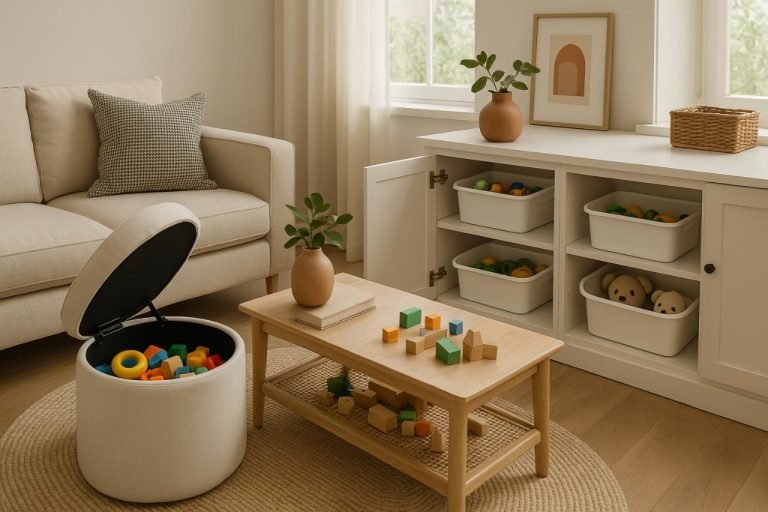Hidden toy storage furniture combines intelligent design with everyday functionality to keep children’s playthings neatly out of sight. Designed to support both order and style, these dual-purpose solutions help reduce visual clutter, especially in shared family spaces. Small homes, minimalist interiors, and multipurpose rooms benefit the most from these innovations. Key elements of this furniture category include multi-use compartments, soft-close mechanisms, and styles that seamlessly blend into the room’s decor. Families searching for practical solutions without compromising on design find hidden toy storage to be a transformative asset.
What is Hidden Toy Storage Furniture and How Does It Work?
Hidden toy storage furniture refers to multifunctional pieces designed to discreetly store children’s toys while maintaining a clean aesthetic in living areas. These pieces serve dual purposes: they act as functional furniture items (like benches or tables) while housing toys within compartments, drawers, or lift-top sections. The structure typically integrates soft-close mechanisms, modular design, and safety features to allow convenient access for children and adults. Many designs also support toy categorization, aiding in organization and Montessori-based learning environments.
Ottoman Storage
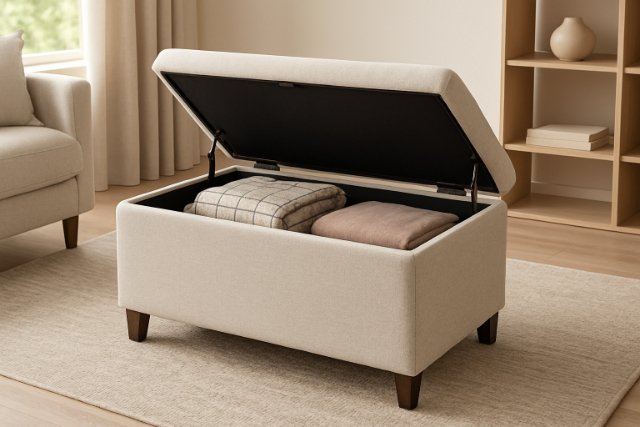
Ottoman storage combines seating functionality with hidden compartments underneath a cushioned top. The internal cavity can be sectioned using dividers to store different toy types such as plush animals, board games, or blocks. Padded tops provide comfort and double as a soft surface for toddlers. Some models include child-safe hinges and fabric linings to reduce injury risk and wear on toys.
Storage Benches
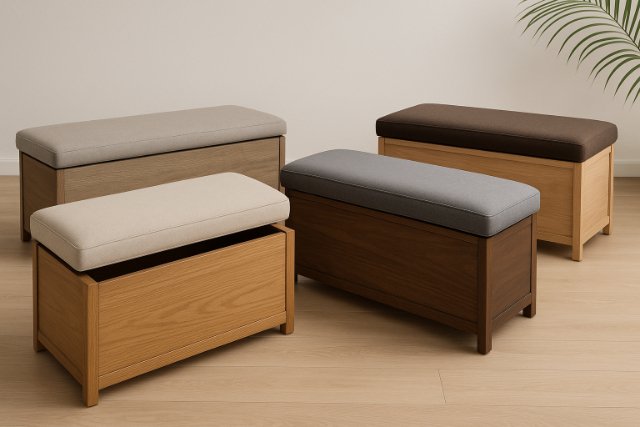
Storage benches feature a hinged or removable seat with internal compartments. Commonly placed in entryways or at the foot of beds, they offer quick access and spacious capacity. The bench exterior often matches living room decor, making it ideal for toy concealment in adult spaces. Bench options vary from minimalist wood finishes to upholstered models that enhance comfort.
Under-Bed Drawers
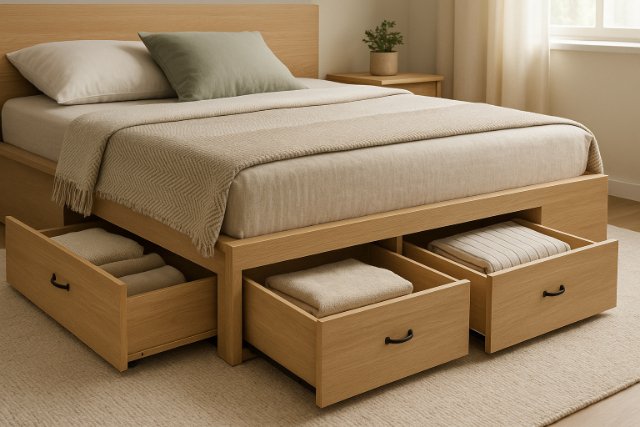
Under-bed drawers utilize the often-wasted space beneath beds. Sliding drawers or wheeled bins slide out smoothly to reveal storage ideal for larger toys, dollhouses, or LEGO sets. Built-in handles and soft-close sliders improve usability. Low-profile designs ensure easy access for young children, making them suitable for daily toy rotation strategies.
Toy Chests
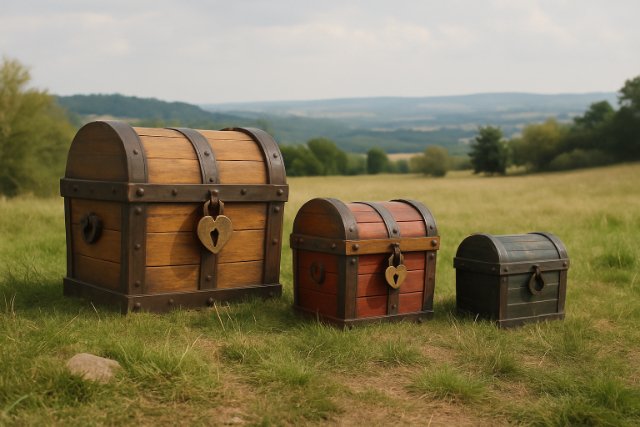
Toy chests remain a classic storage option reimagined in modern design. Contemporary toy chests often include safety locks, air gaps, and slow-closing hinges to prevent accidents. Finishes range from painted wood to woven rattan, allowing the chest to match surrounding furniture. Some designs are portable with wheels and handles for repositioning.
Why is Hidden Storage Essential for Toy Organization?
Hidden storage is essential for maintaining visual harmony, improving child safety, and reducing cognitive clutter in multi-use spaces. A cluttered environment can negatively impact children’s focus and parents’ stress levels. Concealed compartments allow easy access to toys without leaving them visible, especially in shared or small living spaces.
Hidden storage also supports structured toy rotation, encouraging better engagement and less overstimulation. Integration with home aesthetics ensures parents can manage toys without compromising decor.
What Are the Best Types of Hidden Toy Storage Solutions?
Optimal hidden toy storage solutions combine utility, style, and accessibility. Types include ottoman storage, beds with compartments, convertible coffee tables, modular units, and multifunctional shelves with bins. Selection depends on room size, child age, and intended location within the home.
Can Ottoman Storage Be Used for Toys?
Ottoman storage is highly effective for organizing small to medium-sized toys. It offers deep, enclosed space, making it ideal for items like dress-up clothes, plush toys, or puzzles. Ottomans in child-safe fabrics and with safety hinges are optimal. Some versions feature internal trays or dividers for further categorization.
Are There Beds With Hidden Toy Compartments?
Yes, children’s beds increasingly come with built-in storage drawers or lift-up frames. These compartments provide large-volume storage for oversized toys or off-season items. Models with sliding drawers on wheels are preferred for ease of use. Some beds include integrated shelving in headboards for books and smaller items.
How Can Coffee Tables Double as Toy Storage?
Convertible coffee tables feature lift-tops or nested compartments beneath the tabletop. These tables store toys discretely in living rooms without disrupting decor. Popular in open-plan spaces, such designs cater to families needing accessible but invisible toy storage during non-play hours.
How Do You Choose the Right Hidden Toy Storage for Small Spaces?
Choosing the right hidden toy storage for compact areas requires evaluating furniture size, weight, mobility, and room aesthetics. Modular, foldable, or vertical options maximize limited floor space while ensuring accessibility. Measurements must consider surrounding clearance and child access height.
What Materials and Sizes Are Best for Apartments?
Lightweight wood, MDF, and reinforced fabric are best suited for small apartments. Materials like linen or canvas offer flexible storage in baskets or bins. For hard furniture, compact benches or ottomans (30″ or less in length) fit well in studio layouts. Stackable boxes or under-sofa storage maintain order without taking extra room.
Are Foldable or Collapsible Options Effective?
Foldable or collapsible storage units are highly effective for short-term organization or travel. Pop-up chests and soft bins can be stowed away when not in use, making them ideal for rotating toys. Some designs include zippers or Velcro closures to maintain form, while others have interior support panels for stability.
How Do You Organize Toys Within Hidden Storage Units?
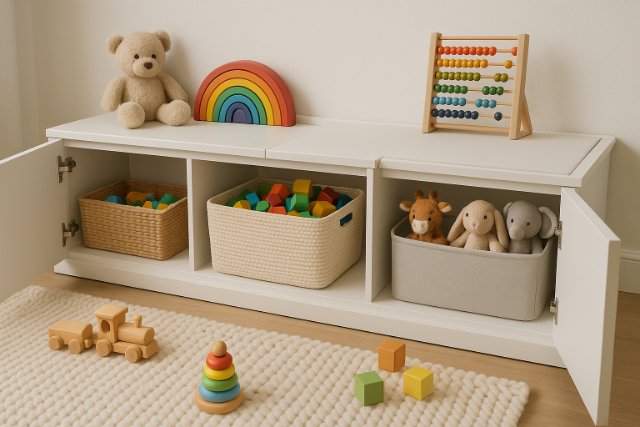
Organizing toys within hidden storage requires a structured system based on categories, usage frequency, and educational purpose. Labeling, compartmentalization, and rotation cycles are key strategies. Clear organization not only keeps toys accessible but supports children’s autonomy and participation in clean-up routines.
Should You Categorize Toys Before Storage?
Yes, categorization enhances toy retrieval and teaches children classification skills. Group toys by type (e.g., vehicles, blocks, dolls), function (creative, educational, sensory), or size. Use dividers or labeled bins to separate categories inside drawers or compartments. Transparent containers inside hidden storage improve quick visibility.
How to Rotate Toys Using Hidden Furniture?
Toy rotation involves cycling through different sets of toys stored within hidden compartments. Store lesser-used toys in deeper sections and keep active toys in accessible zones. Establish a schedule (weekly or bi-weekly) to reintroduce stored items. This method maintains novelty, reduces mess, and aligns with Montessori principles.
What Are Child-safe Features to Look for in Hidden Storage Furniture?
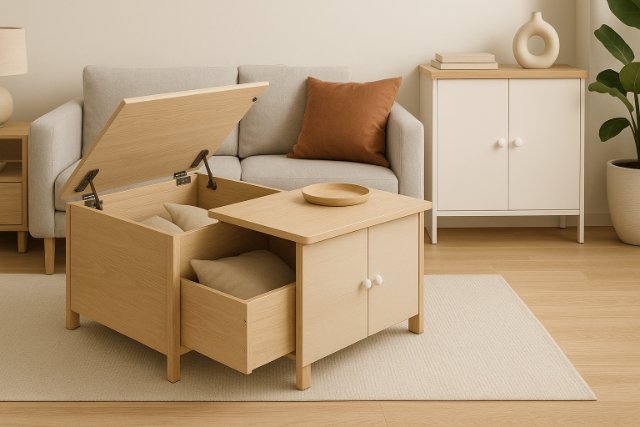
Child-safe hidden storage furniture includes features like soft-close hinges, rounded edges, anti-tip mechanisms, and non-toxic finishes. Safety ensures that children can use or access furniture without risk of injury. Compliance with ASTM or JPMA safety standards adds reliability for parents.
Are There Soft-close Hinges or Anti-tip Designs?
Yes, many high-quality hidden storage products include soft-close hinges that prevent slamming and finger injuries. Anti-tip designs such as wall anchors or wide bases stabilize tall or heavy furniture. Some modular systems also include locking casters to prevent movement during use.
How Important is Non-toxic Material?
Non-toxic materials are essential in environments with children. Look for furniture labeled “low-VOC,” “formaldehyde-free,” or finished with water-based paints. Certifications from organizations like GREENGUARD or OEKO-TEX ensure the furniture does not emit harmful chemicals into indoor air.
Where to Buy the Best Hidden Toy Storage Furniture?
Top retailers for hidden toy storage include IKEA, Wayfair, Pottery Barn Kids, and Crate & Kids. These platforms offer extensive options across styles and budgets. Online marketplaces like Amazon also feature smaller brands with modular or niche designs.
Are Ikea and Wayfair Good Sources?
IKEA and Wayfair provide diverse, affordable options suitable for most families. IKEA emphasizes modular and minimalist designs with easy assembly, while Wayfair features a broader variety of brands, including premium and child-themed items. Both platforms offer customer reviews and shipping flexibility.
What Should You Look for in Online Reviews?
Important review aspects include durability, ease of assembly, child-friendliness, and long-term usability. Filter reviews by “parents” or “family use” to assess performance in real-life scenarios. Product photos from buyers offer visual confirmation of size and aesthetic.
How Much Does Hidden Toy Storage Furniture Cost?
Prices for hidden toy storage furniture range from $30 for soft bins to over $400 for multifunctional designer pieces. Cost varies by size, material, brand, and included safety features. Custom-built options and modular systems typically cost more but offer tailored solutions.
Is It More Expensive Than Regular Storage?
Yes, dual-purpose or aesthetic-focused storage usually costs more due to added functionality and design elements. However, long-term value is higher as these pieces reduce the need for separate seating or decor items. Safety and quality certifications also add to the price.
Are Diy Hidden Storage Solutions Affordable?
DIY hidden storage options can be budget-friendly. Repurposing old furniture with new hinges, dividers, or paint transforms items into storage units. Materials like plywood, baskets, and fabric covers can create concealed bins. Free plans and tutorials online make DIY a practical alternative.
How Do Hidden Storage Options Impact Interior Aesthetics?
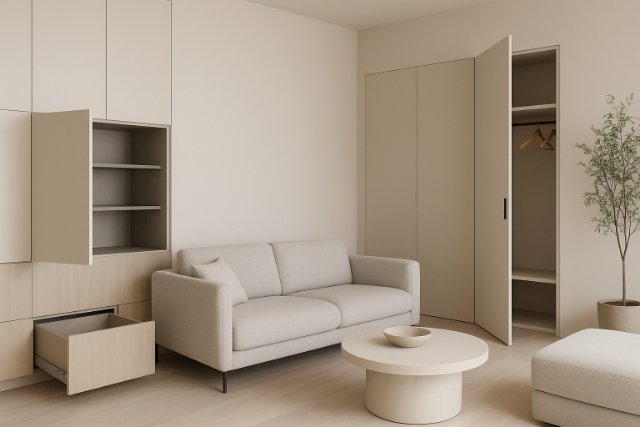
Hidden storage options support minimalist, Scandinavian, boho, and modern interior aesthetics by keeping toys invisible. The furniture design often matches flooring, walls, or other decor elements to blend in. Soft textures, muted tones, and streamlined silhouettes enhance cohesion in shared living spaces.
Can You Match Hidden Storage With Home Decor?
Matching hidden storage with decor involves selecting colors, materials, and finishes similar to existing furniture. Upholstered benches in neutral fabrics, wood chests in matching grain, and bins in complementary tones improve visual harmony. Custom upholstery and paint can further align aesthetics.
What Are Minimalist and Modern Styles Available?
Minimalist styles emphasize clean lines, matte finishes, and monochrome palettes. Modern styles introduce bolder colors, geometric shapes, and metal-accented hardware. Brands often categorize products by style, allowing buyers to filter options according to their home design theme.
What Are Common Mistakes When Buying or Using Hidden Toy Storage?
Common mistakes include ignoring dimensions, choosing furniture without safety features, and overlooking accessibility. Oversized units can crowd small spaces. Lack of labeling or categorization within storage leads to clutter. Aesthetic mismatches disrupt interior flow. Choosing form over function often results in poor usability.
What Are Creative Diy Hidden Toy Storage Ideas?
Creative DIY ideas include building lift-top benches with storage cavities, converting bookshelves into cubby units, or turning old drawers into under-bed storage. Pallets can be repurposed into toy crates with wheels. Cushion-topped crates serve as dual-purpose stools. Pegboard frames with fabric covers offer vertical hidden storage.
Conclusion
Hidden toy storage furniture enhances home organization by merging aesthetics with practicality. From ottoman storage to convertible coffee tables, these pieces provide clutter control while promoting child-friendly safety and engagement. With the right materials, categorization, and design alignment, families can create serene spaces where toys exist without overtaking the room. The right storage transforms daily routines and supports developmental play without compromising home beauty.
FAQ’s
Benches, ottomans, lift-top coffee tables, and under-bed drawers can hide toys while serving other functions.
Choose furniture that matches your color palette, fabric choices, and style (modern, rustic, minimalist) to blend seamlessly.
Yes, with features like soft-close lids, anti-tip hardware, and non-toxic finishes, hidden storage can be safe for young children.
Soft bins, DIY crates, collapsible chests, and IKEA hacks offer affordable yet functional storage solutions.
Use labeled bins or dividers to separate toys by category, frequency of use, or size within the same storage unit.
Yes, adding internal dividers, soft linings, or lid cushions can turn regular furniture into hidden toy storage.
IKEA, Pottery Barn Kids, Wayfair, and Crate & Kids offer widely reviewed and popular hidden storage furniture lines.
Create a rotation schedule and divide toy types among different hidden sections to keep only a portion accessible at a time.


